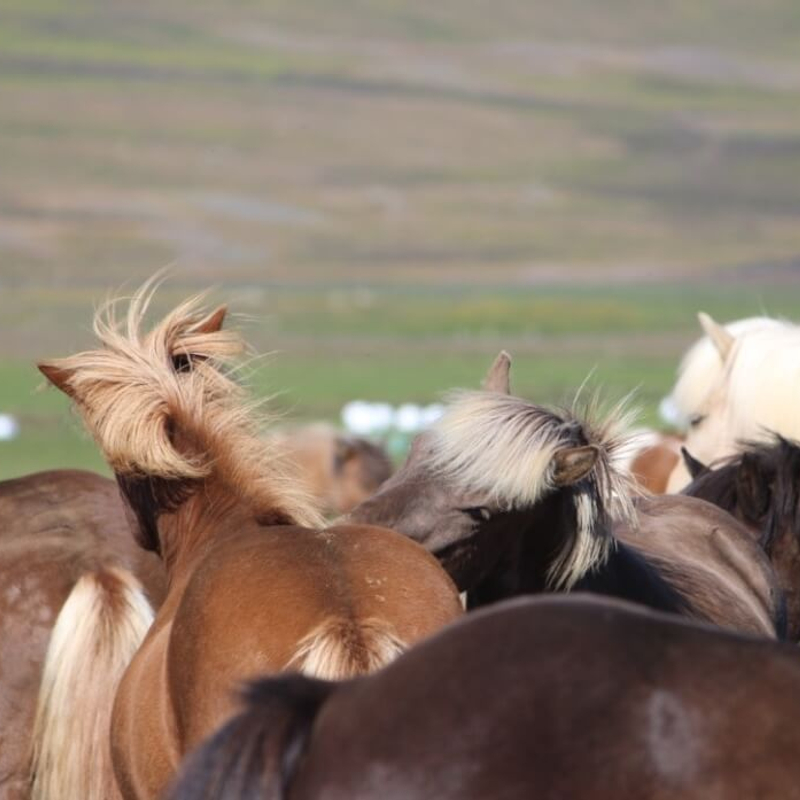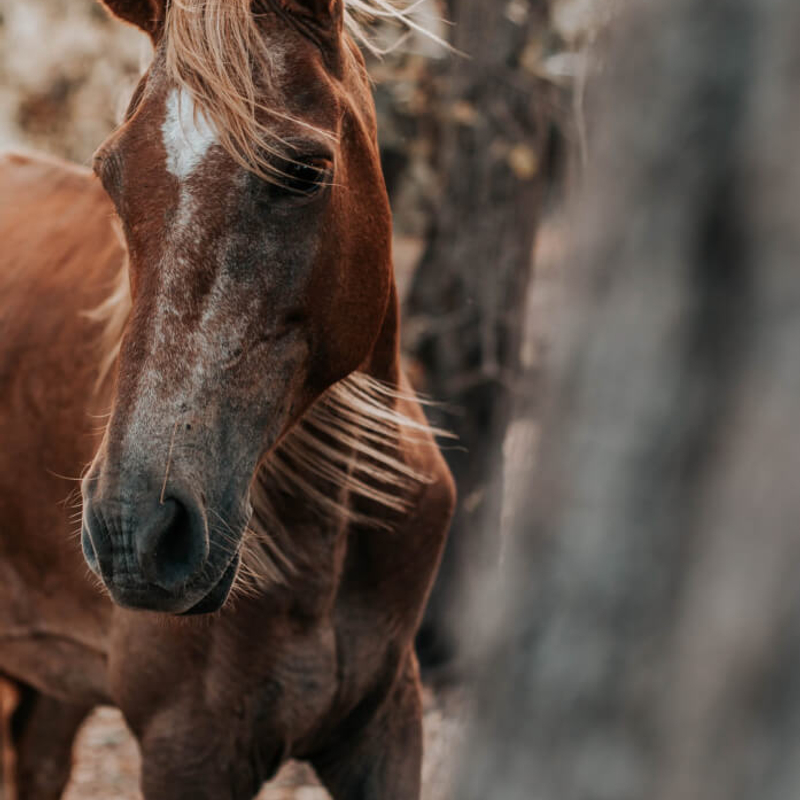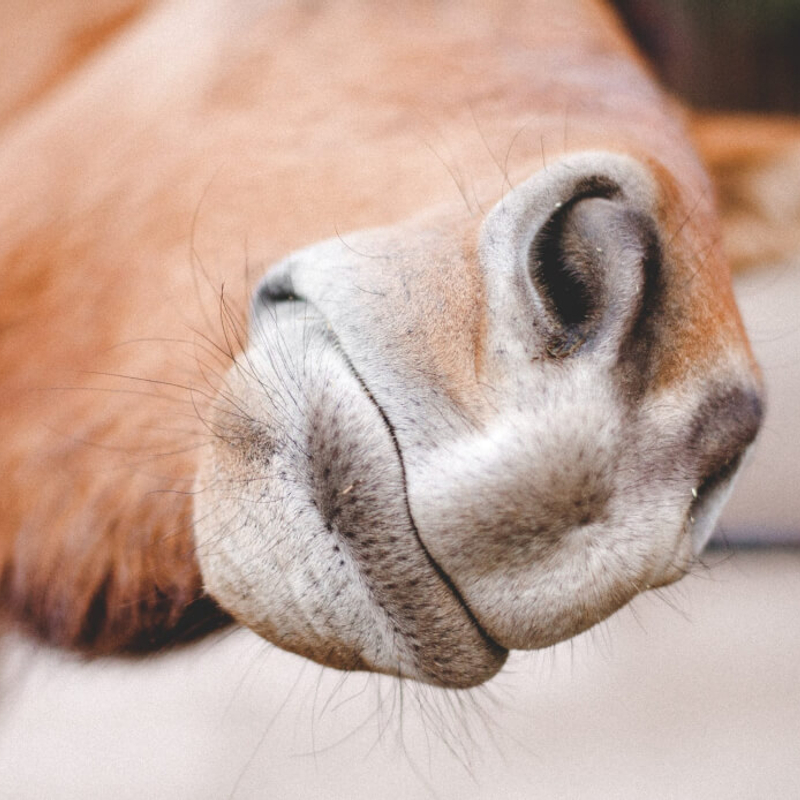Chronic Allergic Pruritus
The most common cause of allergic itching in horses is a hypersensitivity reaction to insects during the warmer months of the year. Other allergies that can cause itching are atopic dermatitis and food and contact allergies. During these allergic reactions, the immune system releases molecules that interact directly with the nerve fibers and thus trigger the itching.

What is the trigger?
Three factors contribute to the development of allergic itching: the genetic makeup of the patient, contact with the allergen and dysregulation of the immune system. Environmental factors such as housing, mold awareness, large numbers of insect bites, parasite infestation, viral infections and vaccinations with modified live vaccines can influence the occurrence of atopic dermatitis. Contact with the triggering allergen leads to an immediate and a delayed type 1 hypersensitivity reaction of the immune system, which results in mast cell degranulation. The release of inflammatory and vasodilator substances leads to the typical eosinophilic inflammation of the affected areas of the skin and itching. Depending on the cause of the allergic itching, type 1 (atopic dermatitis) or type 4 (contact allergy) can lead to hypersensitivity reactions to the respective clinical picture. The ingredients of many locally applied drugs, insect repellents, care products, etc. can cause contact allergies.
Symptoms?
Horses with a hypersensitivity reaction to insect bites show nodular skin thickening, which can be accompanied by crust formation and hair loss. Areas of the skin affected by itching will be rubbed sore and the skin may be thickened from the constant scratching. Some horses develop nettle rash at the same time. Horsefly and deer lice bites usually result in nodular ulcerative lesions. Due to the chronic itching, horses lick, scratch and bite the affected areas of skin and often injure themselves as a result. These self-induced injuries can become inflamed or infected with bacteria and / or fungi. In the case of atopic dermatitis, horses usually show the itching on both sides and symmetrically. Common locations are the head, ears, neck and legs, but the mane, back and tail can also be affected. The clinical symptoms are hair loss, redness, sore skin with small nodules or pustules, nettle rash, thickened skin, ulceration and flaking. Even horses with a contact allergy can show chronic itching and skin changes due to long-term contact with the allergen. The clinical symptoms of feed allergies are persistent or recurrent nettle rash and itching with resulting skin changes. Ulceration and scaling. Even horses with a contact allergy can show chronic itching and skin changes due to long-term contact with the allergen. The clinical symptoms of feed allergies are persistent or recurrent nettle rash and itching with resulting skin changes. Ulceration and scaling. Even horses with a contact allergy can show chronic itching and skin changes due to long-term contact with the allergen. The clinical symptoms of feed allergies are persistent or recurrent nettle rash and itching with resulting skin changes.


Who is affected?
All stinging insects such as Culicoides mosquitoes, stable flies, horn flies, black flies, horseflies and deer lice flies can lead to a hypersensitivity reaction. Each of these insects stings the horse in its specific areas of the body and also has very different requirements for an optimal environment. Atopic animals show clinical symptoms much earlier (1-4 years) than horses with acquired hypersensitivity. Depending on the triggering allergen, the horses show the clinical symptoms only seasonally or all year round. Food allergies are very rare in horses. Contact allergies occur when a protein is absorbed through the skin, which then leads to an allergic reaction in the body. Skin changes can occur as early as 5-6 hours after contact with the allergen.
